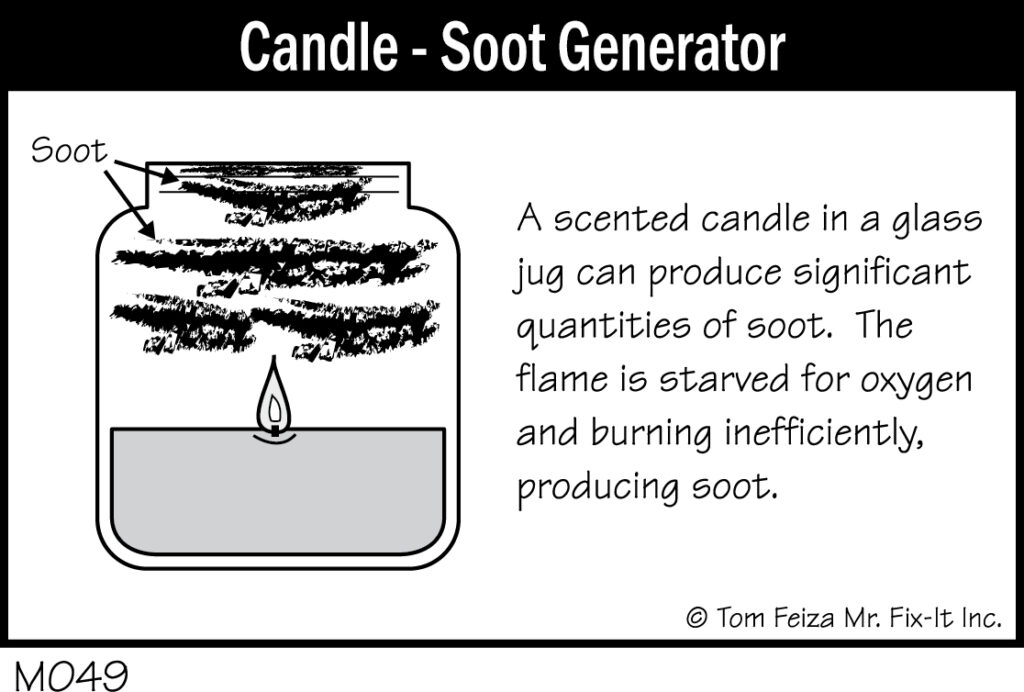QUESTION
I think I have soot stain problems in my house after reading about them on your website. I have all-electric house heating, made up of baseboards and storage units. My wife loves her candles as much as I love my woodworking, but both cause dust and soot. Can you suggest a cleaning solution for the ceilings and walls? Also, can you recommend any air filtration solutions to help the problem? Thank you.
ANSWER
The best solution for the soot stains is to stop burning all candles. Well, OK – I do ‘let’ my wife burn a few high quality candles, and she keeps the wicks trimmed to about 1/4″ length. A high quality candle and a short wick will reduce the soot produced. We don’t ever use the nice, smelly candles in a glass jug. They are great soot producers because there is a lack of oxygen in the jug and the scent comes from something released into the air.
Removing the soot is a problem because it is such a fine particle and it tends to stick to surfaces with a magnetic charge. You can try a dry sponge – it’s a large, soft, rubbery sponge that absorbs soot. They are used for fire restoration work and you can find them in larger paint departments. After wiping with a dry sponge, clean the area with a strong detergent using lots of rags and water/detergent changes.
Soot is very hard to remove. When re-painting, prime the surface with BIN to cover the soot. BIN is available in most paint stores and is also used in fire restoration.
There is no filter that will remove soot. For the woodworking dust, I suggest you try to control it at the source. Use a vacuum system with a great filter and seal the woodworking shop from the rest of the house. Seal any heating ductwork in the shop, particularly the return ducts that may suck in the dust from the air. On a forced air furnace, use the best quality paper filter you can find to remove the sawdust.


